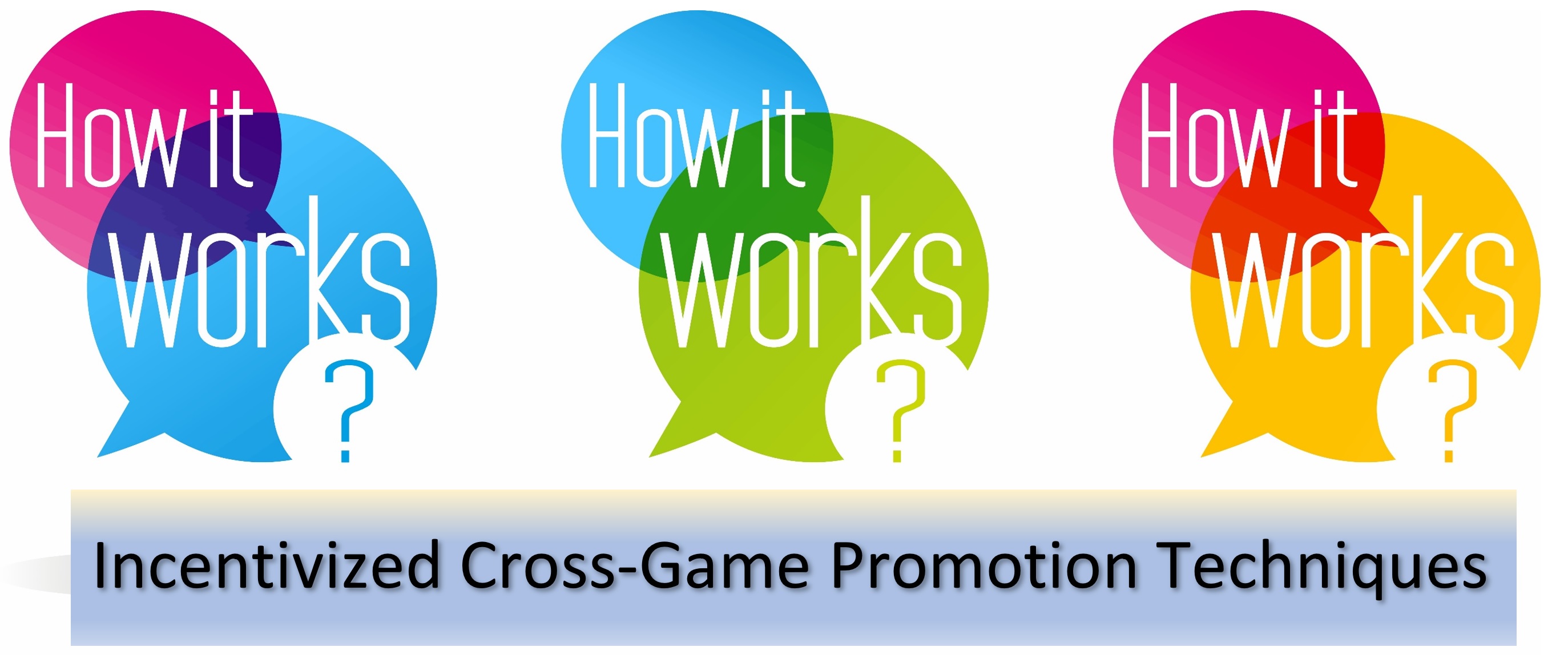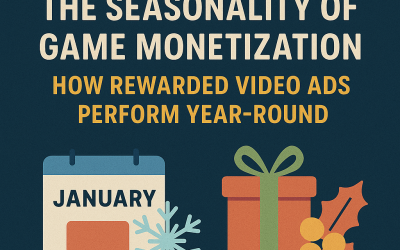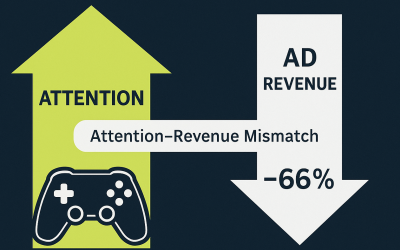
Boosting User Base and Revenue with Cross-Game Promotion
With millions of games flooding app stores, standing out can be challenging. One effective way to increase visibility and revenue, especially on a tight budget, is through incentivized cross-game promotion. Cross-game promotion allows developers to expand their reach by promoting their games within each other’s user bases. Here’s what you need to know about implementing cross-game promotion to maximize revenue and grow your audience.
Contents
What is Cross-Game Promotion?
Cross-game promotion is a marketing strategy where two games mutually promote each other to their audiences, offering free advertising within each other’s apps. Instead of spending on paid ads, each developer features the other’s game as an ad placement, creating a “value exchange” without monetary cost. Whether the exchange is based on downloads, clicks, or installs, both parties gain increased exposure in a cost-effective way.
For example, a developer might place a banner for a partner game within their app, while the partner displays an ad for the first game. This strategy can help you reach new players who are already engaged in mobile gaming and potentially interested in your app.
Benefits of Cross-Game Promotion
Cross-game promotion offers several advantages, especially for developers on a limited budget. Here are some of the main benefits:
- Cost-Effective User Acquisition
Traditional marketing, including paid ads, can be expensive. Cross-promotion provides exposure without the associated ad spend. Since each developer uses their existing audience, this approach is ideal for those looking to grow without incurring high costs. - Targeted Audience Reach
Cross-game promotion places your game in front of users who already enjoy mobile gaming. This audience is highly relevant and more likely to install your app compared to general advertising audiences. - Increased Engagement Through Incentivization
You can incentivize users by offering rewards or in-game perks for downloading a partner app. These incentives can drive higher engagement rates, as users feel they’re gaining value from the interaction.
While cross-game promotion offers numerous benefits, it also comes with challenges. Careful planning, testing, and data analysis are essential to ensure both partners are getting equal value from the collaboration.
Potential Pitfalls of Cross-Game Promotion
Despite its benefits, cross-game promotion isn’t without challenges. Here are some considerations to keep in mind:
- Requires Data Analysis and Optimization
To maximize effectiveness, cross-game promotion requires ongoing analysis. Tracking metrics like downloads, retention rates, and click-through rates is crucial. By optimizing based on these metrics, you can refine your campaign to get the best results. - Value Imbalance Between Partners
Achieving equal value in cross-promotion partnerships can be challenging. If one game has a larger audience or higher user engagement, it may deliver more value to the other partner. Tracking mechanisms or mediation layers can help ensure that both parties receive comparable benefits. - Risk of Promoting Competitors
Avoid cross-promoting with direct competitors. Choose partners that complement your game without offering similar features or gameplay styles. Cross-promoting with games that appeal to a similar user demographic without competing directly is ideal.
Options for Implementing Cross-Game Promotion
There are several approaches to implementing cross-game promotion, depending on your resources and network connections. Here are some popular methods:
- Direct Partnerships with Other Developers
A simple way to implement cross-game promotion is by partnering directly with another developer. Both parties agree to display each other’s games within their own apps, using in-app placements like banners or interstitial ads. You’ll need a tracking system to monitor downloads and ensure a fair exchange. Direct partnerships allow flexibility and control over the campaign, as you work closely with your partner to optimize placement and ad creatives. - In-House Promotion Using Existing Games
If you have multiple games, you can promote new releases across your existing user base without relying on an external partner. By placing ads for one game in another, you encourage users who already enjoy your games to try your latest release. This approach gives you more control over the ad placement and keeps users within your gaming ecosystem, increasing overall retention. - Using Ad Networks for Cross-Game Promotion
Many ad networks support cross-promotion within their networks, connecting you with developers who are also interested in this type of advertising. Ad networks can help automate the process by matching you with suitable partners, simplifying campaign setup, and providing metrics. Some networks even offer “in-network” cross-promotion, where ads are displayed exclusively within games in the same network, ensuring a relevant audience.
Each method has its pros and cons, but ad networks offer the advantage of scale and less manual management. For smaller developers, this can be an efficient way to reach a large, relevant audience without building direct relationships.
Best Practices for Effective Cross-Game Promotion
To get the most out of cross-game promotion, here are some strategies to ensure successful implementation:
- Choose Partners Wisely
Select partners whose games attract similar audiences but don’t directly compete with yours. For instance, if you’ve developed a casual puzzle game, partnering with a trivia or adventure game may be more beneficial than partnering with another puzzle game. - Incentivize the Experience
Offering users incentives, like extra lives, virtual currency, or exclusive items, can increase conversion rates. Users who feel they’re gaining something valuable are more likely to download and engage with the promoted game. - Monitor and Optimize
Set up tracking mechanisms to monitor installs, click-through rates, and user engagement. This data is essential for optimizing your cross-promotion strategy. Regularly review results to refine placements and incentives based on what’s working best. - Maintain Consistency Across Campaigns
Consistency in messaging and branding makes the cross-promotion experience feel seamless to users. Ensure that the ad visuals and calls-to-action align with both your game and your partner’s, creating a cohesive experience that builds trust and encourages downloads. - Adapt to User Feedback
Pay attention to user feedback, especially if you notice any frustrations or dislikes regarding the ads. Make adjustments as needed to ensure the cross-promotion doesn’t interfere with the user experience in either game.
Why Cross-Game Promotion Works for Budget-Conscious Developers
Cross-game promotion is especially effective for developers who already have a user base or multiple games in their portfolio. With an existing audience, your value in a cross-promotion partnership increases, as you bring more potential users to the table. Smaller developers with limited marketing budgets can benefit greatly from this approach, as it allows them to reach engaged users without significant ad spend.
While larger budgets can offer broader advertising opportunities, cross-promotion enables smaller teams to tap into new audiences and maximize user acquisition. When combined with incentives and optimized ad placement, cross-game promotion can deliver substantial growth.
Final Thoughts
Cross-game promotion is a valuable strategy for any game developer, especially those seeking cost-effective ways to grow their audience and increase engagement. By partnering with the right developers, incentivizing ad engagement, and consistently monitoring results, you can boost installs, reach a wider user base, and build a sustainable player community. For developers with multiple games or limited budgets, cross-game promotion provides a unique opportunity to maximize reach without breaking the bank.


